|
Aug
04
2025
|
|
Posted 134 days ago ago by Admin
|
|
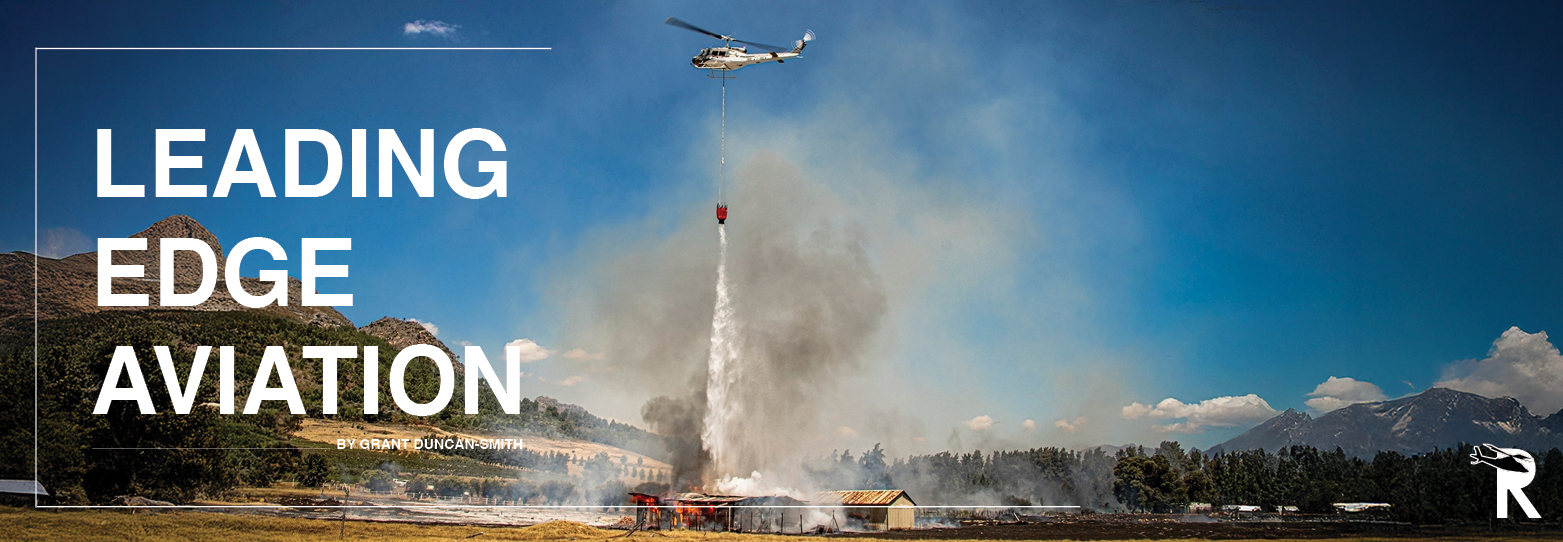
VIEW VIDEO
Leading Edge Aviation (LEA) is a family-run business that was established in 1996 in Nelspruit, South Africa. Mark and Charmaine Jackson, with their sons Peter and Stephen, lead an impressive team of pilots, engineers, and aircrew. The company specializes in firefighting and heavy-lift helicopter operations utilizing the Sikorsky UH-60A Black Hawk and the Bell UH-1H Huey.
Leading Edge is a South African Civil Aviation Authority-approved facility for aircraft refurbishment and upholstery. They are also registered agents for:
- Nebraska Gas Turbine (T53 and T700 engine maintenance and overhauls)
- Tamarack Helicopters (Bell Series component overhauls and parts supply)
- Van Horn Aviation Bell Series composite main and tail rotor blades and Airbus AS350 tail rotor blades.
Operations and Deployment
From the first of November to the end of May, LEA operates from Stellenbosch Airfield near Cape Town.
During the winter (June through October), they fight forest fires in the Lowveld and Escarpment areas, from their base in Nelspruit.
LEA’s Black Hawk entered service in South Africa in March 2018, while their Huey has been actively fighting fires since 2006.
Heavy-lift operations include:
- Transporting construction equipment
- Relocating rhinos
- Recovering aircraft wreckage
The company and pilots have extensive experience, including relief operations in Mozambique (floods), Zimbabwe (Cyclone Idai), and Pakistan (earthquakes).
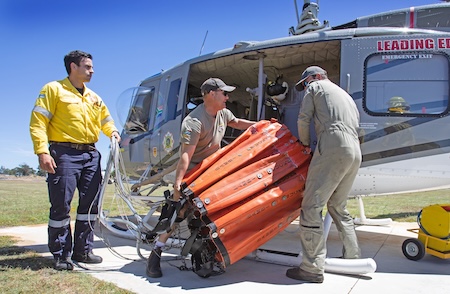
Key Partners
NCC Wildfires provide ground crews to support aerial firefighting efforts across South Africa’s Western Cape province.
Effective wildfire management requires coordinated efforts between helicopters and ground crews. NCC and LEA have partnered to ensure resources are deployed to the fireline more efficiently, allowing firefighters to be inserted into generally inaccessible areas and to obtain an overhead situational awareness of a fire’s behavor. Without ground crews, the effectiveness of a helicopter’s firefighting is greatly reduced. Likewise, not having water to assist ground crews working in remote areas, makes containment much harder and, at times, more dangerous. Putting these two resources together makes for highly efficient and effective firefighting.
Quick Reaction Force (QRF)
LEA’s Quick Reaction Force (QRF), in partnership with the South African insurance industry and the Winelands Fire Protection Association, is making significant gains in protecting homes, vineyards, and businesses. They have the ability to fly when smoke from a threatening fire is seen, get airborne within minutes, and avoid the usual delay in obtaining permission to fly. QRF key partners include Hollard, Bryte, Old Mutual Insure, Santam, and Lombard.
The QRF employs a multi-agency collaboration strategy, deploying and coordinating aerial and ground resources. The aim is to tackle fires quickly before they spread. The land owners and insurers benefit greatly from the QRF and the speedy service provided. The QRF have now also expanded into South Africa’s Lowveld area, where they enjoyed a successful season last year.
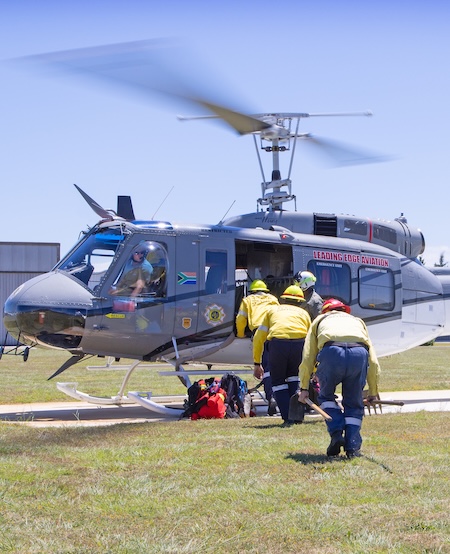
Helitack Training
LEA offers Helitack training at their Stellenbosch base. The training consists of:
1. Ground School Theory
- Overview of the different helicopter types and their layouts, utilizing seat belts, emergency exits and their operation
- Landing zone (LZ) preparation – LZ size and composition, no low vegetation nearby, securing loose articles, obscured obstacles such as fence posts, especially with the Blackhawk fuselage, that is very close to the ground on landing
- Safe approach techniques – keeping a low body position and equipment low to the ground when approaching the helicopter, moving quickly without running or rushing, techniques of carrying personal gear/team gear to the helicopter, approaching from the downslope to avoid the main rotor and the tail rotor.
2. Practical Training
- Safe approach and entry procedures
- Communication techniques in a noisy environment
- Securing gear such as mobile phones, helmets
Table Mountain Fires
The recent Table Mountain wildfires, which lasted several days, were significantly reduced from aerial firefighting support. The steep slopes, inaccessible to ground crews, were targeted by the helicopters, while ground-based teams tackled the accessible fire lines. Crews were efficiently airlifted to the mountaintop to get ahead of the fire.
The Kishugu-Working on Fire joint venture’s Hueys, combined with Leading Edge’s Black Hawk, played a crucial role in controlling the blaze, which spread from the Southern Suburbs to Cape Town’s CBD. A Cessna C182 spotter aircraft provided aerial video footage to incident commanders, enabling precise targeting of the blaze. Water was sourced from local Newlands-area dams, and from reservoirs on top of Table Mountain. Entry and exit flight paths from the dams to the areas of operation were well coordinated by the pilots, alternating between Hely Hutchison and Woodhead Dams, to keep aircraft separate. It’s a relentless day; pilots are replaced with a fresh shift to keep the intensity of the operation unabated. This is what these pilots live for, the flying that excites them and they derive immense pleasure in using their expertise to great effect. The risk of an accident is always there. Challenging flying conditions of smoke with reduced visibility, fire, low and slow flying conditions sometimes at high altitudes, and mountainous conditions with strong winds create a testing environment for the most skilled pilot.
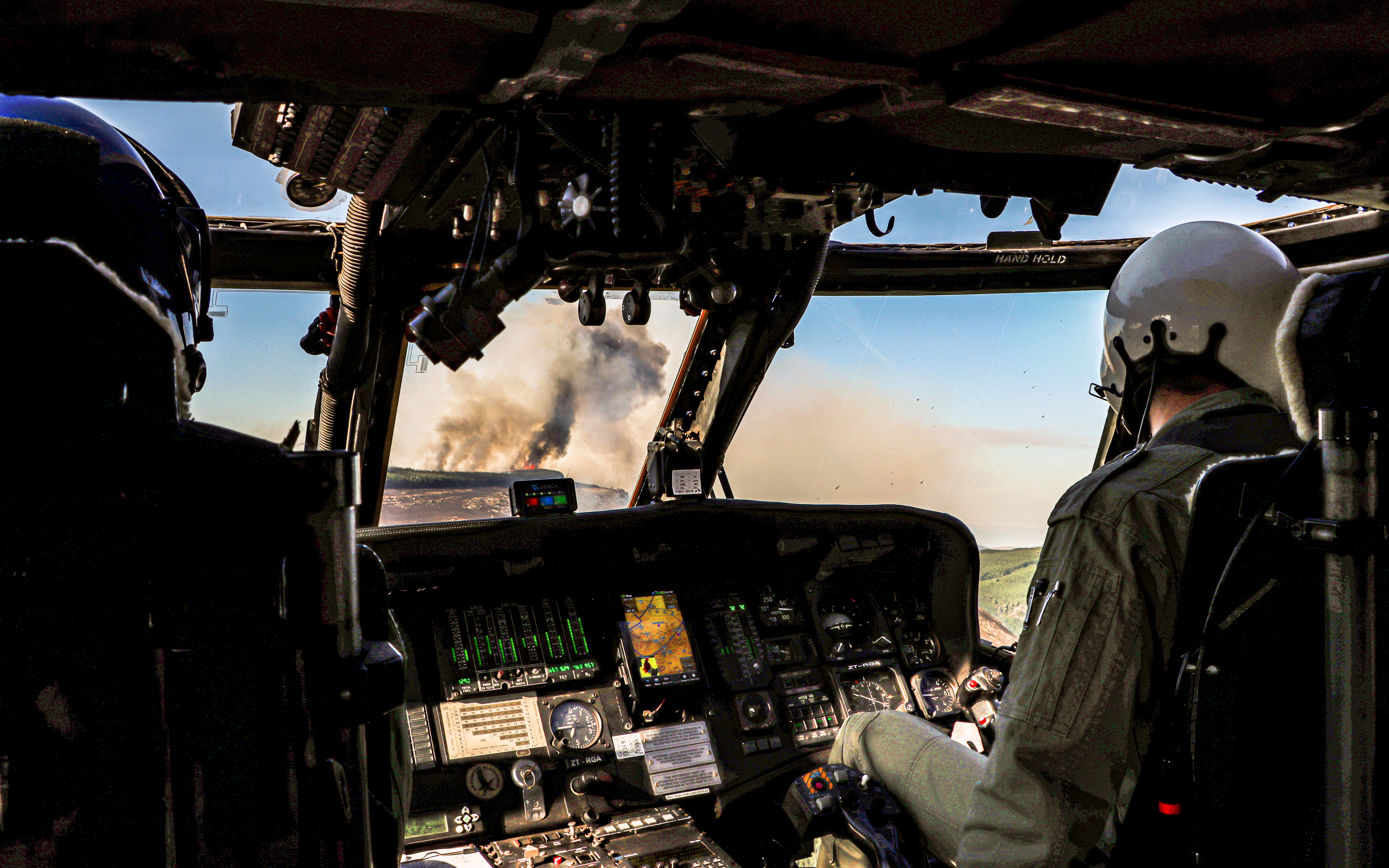
In a recent fire near Paarl in the Western Cape, the Black Hawk dropped 47.5 tons of water in just over an hour, demonstrating its superior efficiency. Mark Jackson says the operating costs of the Black Hawk are twice as much as the Huey, however, this is compensated for by the Blackhawk delivering almost three times the water per drop, compared to the Huey (2,500 liters per Bambi bucket vs. 960 liters with the Huey). The Hawk’s main rotor system of four blades and a fully articulating head means that she has a much higher wind-tolerance allowance to continue operations in conditions where the Huey would need to stand down, making the Blackhawk an indispensable firefighting asset.
Three years ago, the Hawk was instrumental in saving the life of a critically injured fireman following a fatal fire-engine accident near Citrusdal, just before dark. No medical rescue helicopters could fly due to gale-force winds.
The Hawk flew from Stellenbosch to Citrusdal, uplifted the patient from a makeshift LZ, and delivered him to the Christian Barnard Hospital in Cape Town late that evening. The fireman underwent life-saving surgery and after a number of weeks in ICU, he recovered fully.
This season the Hawk flew more than five hours in gale-force winds at the Theewaters Kloof fire, saving many homes and farms from the multiple fires in the area. Not a single structure was lost and no injuries were reported.
Some of the advantages that the Hawk has over the trusty Huey’s include:
Two engines and the ability to fly on one engine safely following an engine failure, even at gross weight. The Huey is a single-engined aircraft.
Other Black Hawk Advantages:
- Two pilots and a crewman mean more safety and observation of obstacles such as wires and trees, as opposed to a single Huey pilot.
- Three hydraulic pumps and systems, as well as three generators.
- An onboard computer to assist with fault diagnosis and redundant systems.
- Two stability augmentation systems assist the pilots.
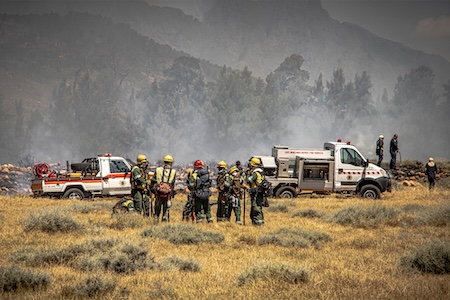
Leading Edge Aviation continues to set the benchmark in aerial firefighting and heavy-lift operations. With a highly skilled team, a diverse fleet and strong partnerships, they remain at the forefront of combating wildfires and executing complex missions across South Africa and beyond.
Bell UH-1H Huey
The Bell UH-1 Iroquois, commonly known as the "Huey," was the first turbine-powered helicopter to enter service in the U.S. military. Developed in the early 1950s, the first model, the Bell 204, first flew in 1958. It was first used in combat operations during the Vietnam War. The Huey played a vital role in various missions, including:
- General support
- Air assault
- Cargo transport
- Aeromedical evacuation
- Search and rescue
- Electronic warfare
- Ground attack operations
Over 7,000 Hueys were deployed in Vietnam, with more than 3,300 lost in combat and accidents. The aircraft has seen action in conflicts such as the Rhodesian Bush War, Falklands War, War in Afghanistan, and 2007 Lebanon conflict.
Bell UH-1H Huey Specifications
- Crew: One pilot
- Max weight: 9,500 pounds
- Useful Load: 4,100 pounds
- Max Speed: 124 knots
- Normal Cruise: 100 knots
- Cargo Hook Capacity: 4,000 pounds
- Seating Capacity: nine passengers
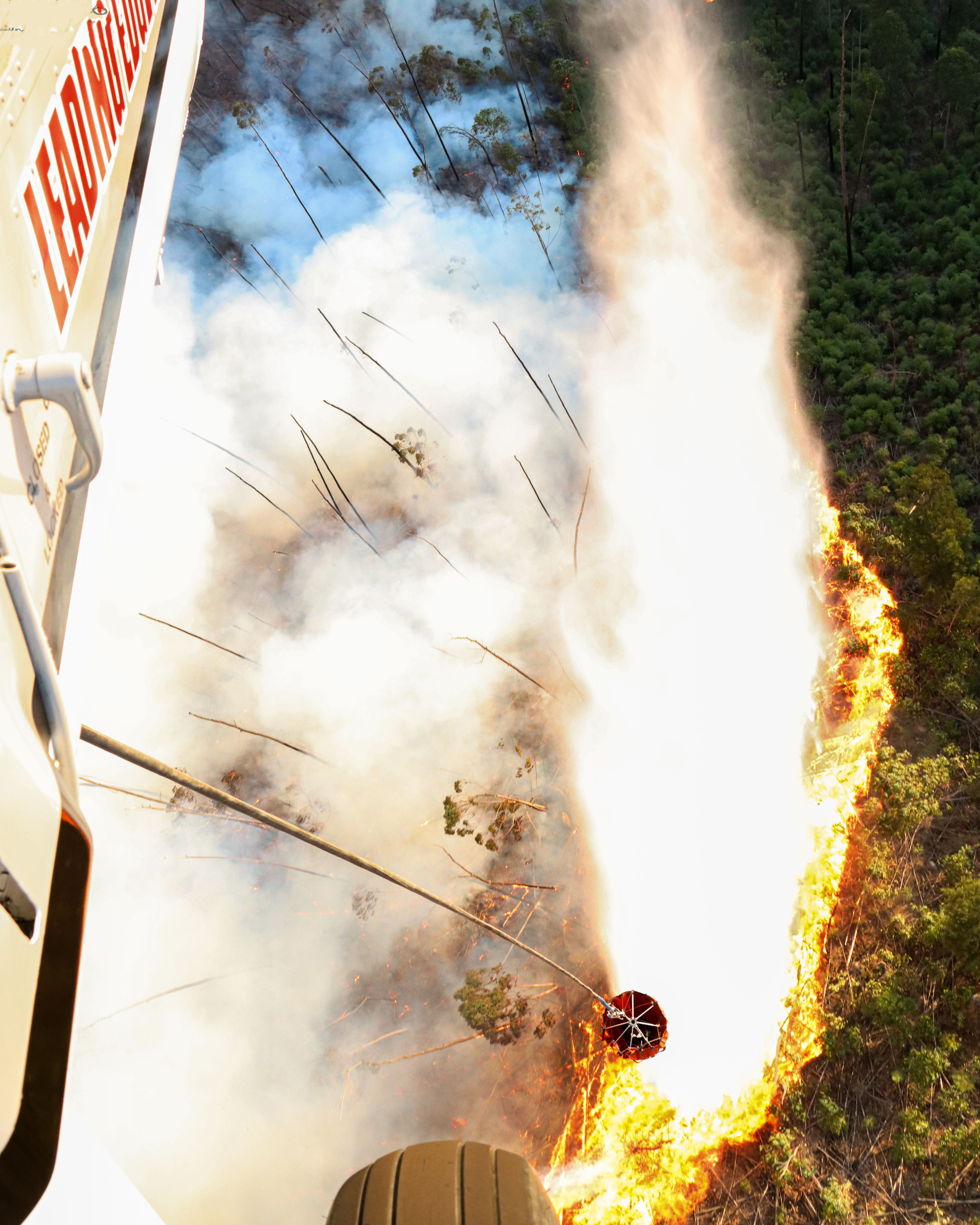
UH-60A Black Hawk
Leading Edge Aviation operates a UH-60A Black Hawk, an iconic helicopter originally developed for the U.S. military. Named after the Native American warrior, Black Hawk, who was revered by the early settlers as a fearless fighter. The UH-60A entered service with the U.S. Army in 1979, and slowly the Huey’s were phased out as the number of Hawks grew to replace the legacy Bell UH-1 Iroquois as the Army's tactical transport helicopter.
The Black Hawk features significant improvements in reliability, survivability, and cost efficiency, including:
- Dual engines with enhanced high-altitude performance
- Modular design for reduced maintenance footprint
- Run-dry gearboxes (able to run 30 minutes undamaged without oil pressure)
- The ability to run for five minutes without engine oil pressure, and has the option of flying with only one operating engine.
- Ballistically tolerant, and redundant hydraulic, electrical and flight-control systems
- Crashworthy armored crew and troop seats, fuel systems, and main structure
- Dual-stage oleo-strut main landing gear
- Quieter, more robust main and tail rotor systems
UH-60A Black Hawk Specifications
Minimum Crew: Two pilots
Maximum Weight: 22,000 pounds
Useful Load: 10,800 pounds
Maximum Speed: 193 knots
Cruising Speed: 140 knots
Cargo Hook Capacity: 8,000 pounds
Seating Capacity: 13 passengers
Powered by General Electric T700 engines rated at 1,622 HP each, the UH-60 has accumulated over 10 million flight hours. Leading Edge Aviation’s UH-60 is one of only a few restricted-type certified Black Hawks for civilian use outside the United States, proving invaluable for missions requiring fire-fighting and heavy-lift capability.
READ MAY/JUNE ISSUE OF ROTOR PRO
READ MORE ROTOR PRO: https://justhelicopters.com/Magazine
WATCH ROTOR PRO YOUTUBE CHANNEL: https://buff.ly/3Md0T3y
You can also find us on
Instagram - https://www.instagram.com/rotorpro1
Facebook - https://www.facebook.com/rotorpro1
Twitter - https://twitter.com/justhelicopters
LinkedIn - https://www.linkedin.com/company/rotorpro1